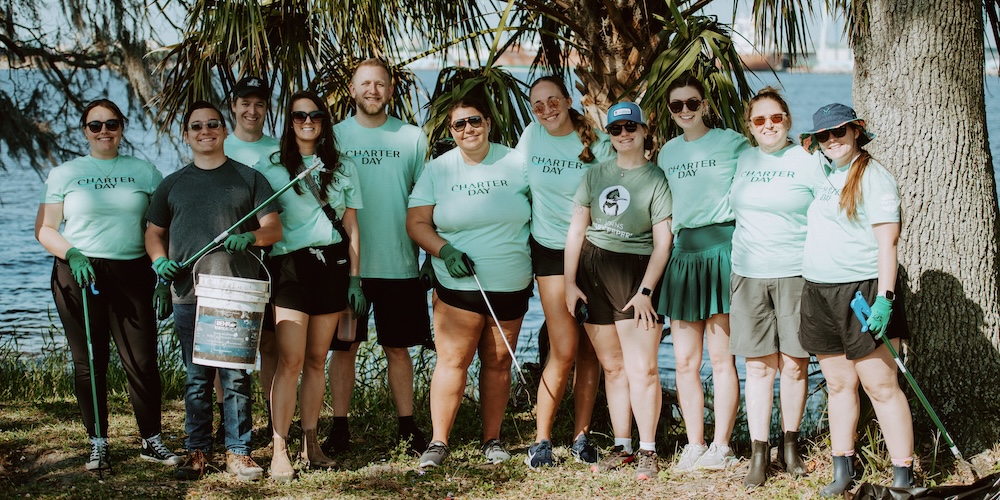Last month’s column was part of a question posed on my final exam in The Ecology of the St. Johns River course. The student’s contribution was well received with a number of favorable reviews. So, I thought I would use another student’s answer to again brag a bit about some of the truly outstanding students we have majoring in Marine Science at Jacksonville University.
This column’s guest contributor is Samantha O’Keefe; Sam comes to JU from the Midwest, with a drive to excel. She has participated in several extracurricular research projects both on and in the river.
Samantha wrote:
Ever since I visited Jacksonville University on my campus tour, I was drawn to the St. Johns River. I was excited to learn more about this fascinating river bordering my college campus, as I came from a landlocked state in the Midwest. After taking my introduction to marine biology course, I quickly learned that this river was not just a place where you could spot dolphins and the occasional manatee, but rather an intricate body of water in need of our help.
Our long and meandering river is teeming with life, ranging from mammals, like manatees, all the way to microscopic organisms, such as phytoplankton, and larval forms of invertebrates we know and love, like the blue crab. Invertebrates in the river are extremely important not only to fisheries in Jacksonville, but also to support the thriving environment within the river. These invertebrates serve as both prey and predators for other organisms in the river and are a significant piece in the food web of the river.
Blue crabs are one of the most prevalent invertebrates within our river and are the largest fishery within the St. Johns River. One of my professors at Jacksonville University visibly lights up when he talks about blue crabs and learning from him is incredible. In his lectures he describes how these blue crabs will travel down south in the river to mate, and then come back up north to Jacksonville after mating and mature over time. Blue crab’s scientific name, Callinectes sapidus, translates to beautiful, savory swimmer.
Our blue crabs need some help. As you may or may not know, the river has been having harmful algal blooms throughout the years, known as HABs. These harmful blooms are caused by both warm water and an excess amount of nutrients that flow into the river. These nutrients come from septic tanks that are leaking waste and nutrients along the river, as well as from water runoff from the fertilizers we use to keep our lawns looking green. To mitigate these blooms and help the blue crab populations, we need to make sure that our fertilizer is at the proper nutrient levels. It is recommended in northeast Florida to have 16-0-16 fertilizer, as our soil is different than the typical nutrient levels for popular fertilizers found at the store. When we consider the river’s health when choosing fertilizer, we are not only improving the quality of our lawn, but also preventing any large harmful algal blooms that may impact the blue crab populations.
As I continue my education at Jacksonville University, it is exciting to learn more about life in the river and to observe our complex river environment. Being out on the river for classes, dolphin surveys, and water sampling for a time series encourages me to contribute to the science behind what happens in the river. I am always learning something new, understanding more about how the environment in our own backyard works and what organisms depend on the river for their very survival. Additionally, I hope to help the river become healthy again and to see it thrive like we have never seen before.
Perhaps this gives you a little perspective on why I feel so blessed to have a career where I can teach and work with students who want to make a difference. Unlike some of my contemporaries, I think the younger generations will do fine. Maybe even clean up some of this mess we are leaving to them.
Glad you asked River Life
What are some of the more interesting names that groups of marine or riverine animals are called?
The English language has some amusing names for animal assemblages. Many people know that a group of dolphins is a pod, and it is a herd of manatees. Jellyfish gather in blooms, swarms or smucks, while clams are in beds and oysters cluster to form reefs. It’s a mess or cast of crabs. Fish can be in schools, runs, or hauls, whereas sardines are a family. It is a shiver or frenzy of sharks. Alligators gather in congregations, while baby gators are a clutch. Some animals that live close to the river are like the passel of opossums and a troop of raccoons. And we could not leave out the cloud of mosquitoes.
River Life runs the first Tuesday of each month in The Florida Times-Union. E-mail Quinton White, executive director of Jacksonville University’s Marine Science Research Institute, with questions about our waterways at qwhite@ju.edu. For more on the MSRI, visit ju.edu/msri.


